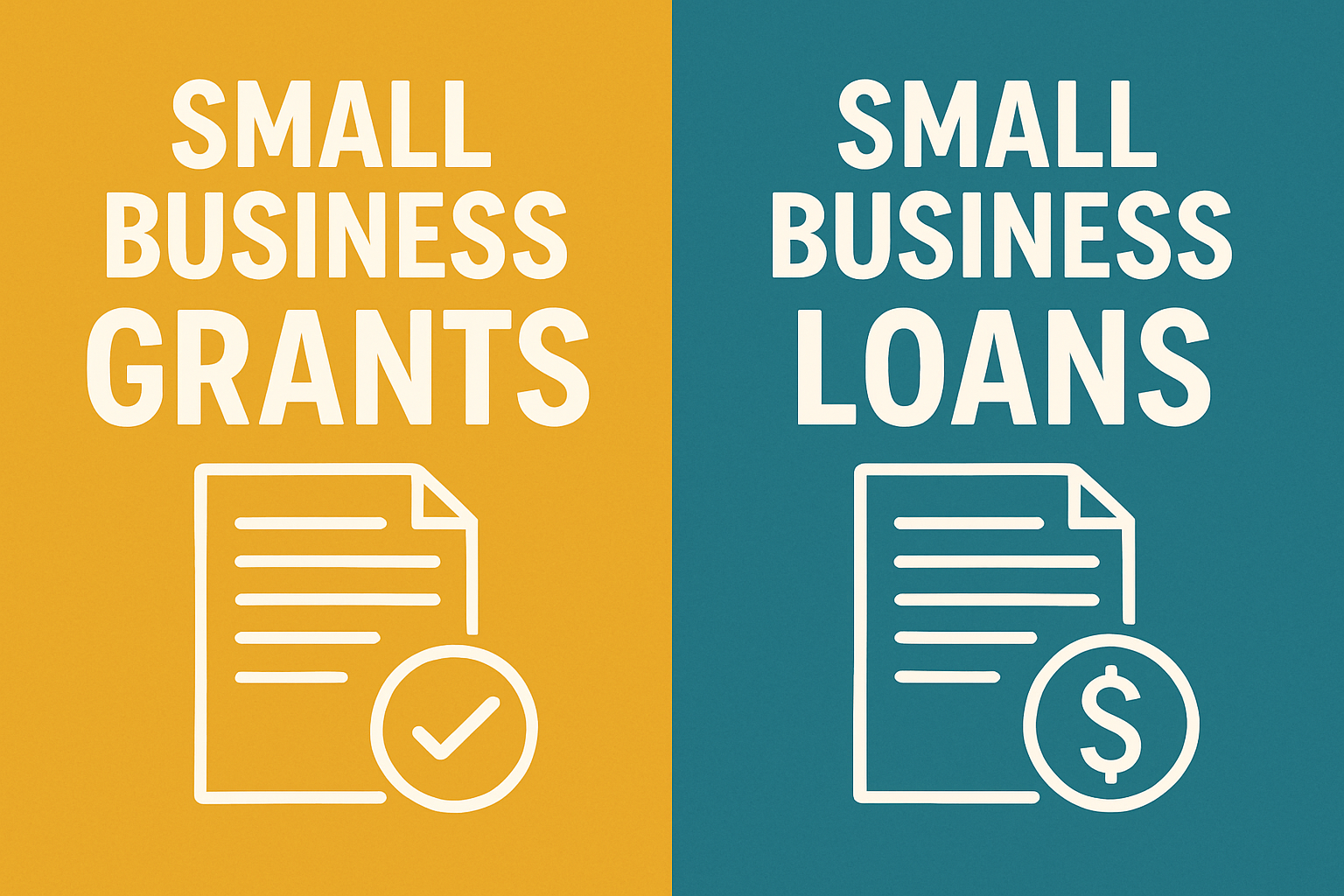Small Business Grants vs. Loans: Which Is Better in 2025?
Choosing how to fund your small business is one of the most important financial decisions you’ll make. And one of the biggest questions entrepreneurs face is: Should I apply for a grant or take out a loan?
Both small business grants and business loans can help you launch, grow, or scale — but they work in completely different ways. One offers “free money” but is highly competitive; the other gives guaranteed capital but must be repaid.
This guide breaks down the key differences between grants and loans, their pros and cons, and how to decide which one is better for your business in 2025.
What Are Small Business Grants?
A grant is funding provided by a government agency, nonprofit, or private organization that does not have to be repaid. Grants are often awarded to businesses that meet specific criteria — such as being minority-owned, women-owned, veteran-owned, or operating in certain industries or regions.
Where grants come from:
-
Federal government programs (e.g., SBIR/STTR, USDA, DOE)
-
State and local economic development agencies
-
Private foundations and corporate grant programs
Best for: Businesses in early stages, innovative startups, or those meeting specific mission-driven criteria.
Pros:
-
No repayment required
-
No interest or equity dilution
-
Can boost credibility and visibility
-
Can be combined with loans or other funding sources
Cons:
-
Highly competitive and limited availability
-
Lengthy and complex application processes
-
Often have restrictions on how funds are used
-
Usually smaller amounts than loans
What Are Small Business Loans?
A business loan is borrowed money that must be repaid over time, typically with interest. Loans can come from banks, credit unions, online lenders, or government-backed programs like SBA loans.
Best for: Businesses seeking predictable, scalable capital for operations, growth, or expansion.
Pros:
-
Accessible year-round (not tied to deadlines or competitions)
-
Higher funding amounts available (up to millions)
-
Predictable repayment schedules
-
Builds business credit
Cons:
-
Must be repaid with interest
-
Requires good credit or collateral
-
Can impact cash flow if revenue is inconsistent
-
May take weeks to secure approval
Grants vs. Loans: Side-by-Side Comparison
| Feature | Small Business Grants | Business Loans |
|---|---|---|
| Repayment Required | No | Yes |
| Amount Available | Usually $1,000 – $100,000 | Up to $5 million+ |
| Competition | Very high | Moderate |
| Funding Speed | Slow (weeks–months) | Fast (days–weeks) |
| Eligibility | Niche (criteria-based) | Broad (credit-based) |
| Application Process | Lengthy, detailed | Streamlined (some automated) |
| Best For | Startups, innovation, nonprofits | Expansion, working capital, growth |
When a Small Business Grant Is Better
-
Your business fits specific eligibility requirements (e.g., minority-owned, research-focused, rural).
-
You’re in the early stages and want to avoid debt.
-
You’re launching an innovative or mission-driven project.
-
You can invest time in writing proposals and competing for funds.
When a Business Loan Is Better
-
You need capital fast to seize a growth opportunity.
-
Your funding needs exceed typical grant amounts.
-
You have predictable revenue to support repayment.
-
You want to build business credit for future financing.
How to Apply for a Grant (Featured Snippet Section)
-
Research grants aligned with your business type
-
Check eligibility requirements carefully
-
Write a clear, compelling proposal or application
-
Submit supporting documents and financials
-
Follow up and apply to multiple programs
How to Apply for a Loan
-
Prepare your financial statements, tax returns, and business plan.
-
Improve your credit score and pay down existing debt.
-
Shop around and compare loan types (SBA, term, line of credit, etc.).
-
Submit your application and respond promptly to lender requests.
-
Review and sign the loan agreement once approved.
Realistic Funding Strategies: Use Both
The smartest businesses often combine grants and loans for maximum impact:
-
Start with grants to fund research, pilot projects, or early-stage growth without taking on debt.
-
Add a loan once your business has traction and needs scalable capital for expansion.
This approach lets you leverage “free money” while still having access to predictable, larger financing when needed.
Future Trends in 2025
-
AI-driven grant platforms are making it easier to find and apply for niche grants.
-
Revenue-based financing and alternative loans are creating flexible repayment options.
-
Public-private partnerships are expanding funding for women, minority, and rural entrepreneurs.
Conclusion: Which Is Better — Grants or Loans?
There’s no one-size-fits-all answer. Grants are ideal if you meet eligibility requirements, have time to compete, and want funding without repayment. Loans are better if you need guaranteed capital quickly, want larger amounts, or plan to scale aggressively.
For many small businesses, the best approach is a mix of both: use grants to reduce financial risk and supplement that with loans to fuel long-term growth. With a thoughtful strategy, you’ll have the resources to grow your business confidently in 2025 and beyond.











